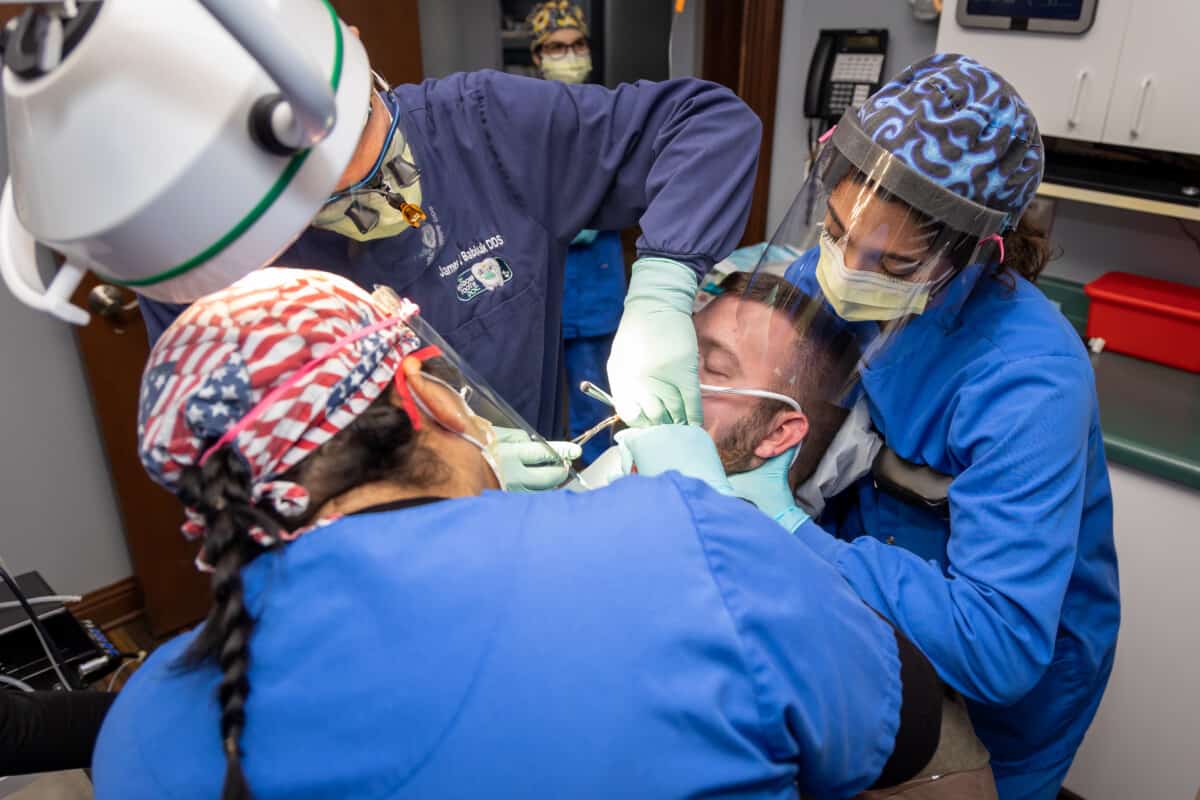
Have You Talked to Your Tooth Doc About Wisdom Teeth Removal?
Your dentist or “tooth doc” can provide you with some information when it comes to wisdom teeth removal. However, they may not know the specifics about the anesthesia used.
It’s important to speak to an experienced oral surgeon for more details. In the meantime, here are a few insights on…
The Types of Anesthesia Used for Wisdom Tooth Removal
Local Anesthetic
Many people refer to the local anesthetic used in dentistry as Novocain, but this drug hasn’t actually been used in dentistry since the 1980s.
Instead, a topical anesthetic will be applied to the mouth using a cotton swab, and an injection of a numbing agent (typically, lidocaine) will then be administered where the topical anesthetic was applied.

When wisdom teeth are removed using only local anesthetic, patients won’t feel any sharp pain. But they will feel pressure, which can be uncomfortable.
Many people, especially young kids, will have anxiety which leads them to equate the sense of pressure with a sense of pain.
Ultimately, people have the right to be treated the way they want to be treated, and while TheWisdomToothDoc™ doesn’t advise it, some patients will choose to have the removal of their wisdom teeth done using only local anesthesia.
Oral surgeons can perform these surgeries much quicker than a general tooth doc or dentist.
This gives these patients an advantage. Nonetheless, retrospection leads most patients to wish they’d chosen to be sedated during the procedure.
Nitrous Oxide
Another type of anesthesia is nitrous oxide or “laughing gas.” It is administered via inhalation from a mask placed over the patient’s nose.
The use of nitrous oxide has been find-tuned considerably over the years; rather than pure nitrous oxide, the “laughing gas” used today is combined with oxygen and safely delivered by a machine in doses low enough to prevent patients from being rendered unconscious.
The primary function of nitrous oxide is to reduce anxiety; it doesn’t alleviate pain, so it is always used in conjunction with a local anesthetic.
Patients who have been administered nitrous oxide will still be aware of their surroundings and able to feel vibration and pressure while the surgery is being done, but to a much lesser degree.
For patients who are extremely anxious, nitrous oxide is not a big help because their nervousness will override the mild effects of the gas. Furthermore, since its effects are so mild, nitrous oxide isn’t particularly useful for most people undergoing wisdom tooth extractions.
On television, when people are given nitrous oxide, they are completely asleep and unaware of what’s going on. The reality is that it doesn’t work that way. It is more like turning the volume down from 10 to 9.
Your Tooth Doc and Television May Not Have All of the Answers!
While you may do some research online, talk to your dentist, friends and family and learn about anesthesia for wisdom tooth removal on your own, it’s important to speak to an experienced oral surgeon about the process and the options available to you. In a future blog, we’ll go into more detail about sedation during wisdom tooth removal.
In the meantime, feel free to contact our office for your consultation to get answers, and check out the information on this site and our Facebook page.